|
I first became aware of the Cruel Jewel 100 in 2015. As I followed a couple of friends who were running the race that year, I thought to myself that I would like to run it someday. Then I saw the buckle. HOLY SHIT! As big as a pie plate and 10 pounds of metal. OK, not really, but you get the idea. It was HUGE! I was doomed from the minute I saw that buckle. It was my Gollum moment: “My precious!” Fast forward to January 2018. I was training for The Barkley Marathons, and in my state of complete delirium from hitting hills in freezing temperatures one afternoon, I got back to my car and had the brilliant idea that I should sign up for Cruel Jewel since my Barkley training would have me in top form and I really had nothing to lose. In theory, it was a perfect training plan. But as we all know, yeah, stuff happens. I came off Barkley with unexpected results and rolled that right into Ouachita Trail 50 with a nagging ache in my right heal. Two weeks prior to Cruel Jewel, my orthopedic diagnosed an irritated heel bone spur caused by Achilles tendonitis from running all those hills. I looked at the doc and said I had a 100-mile race coming up. He shook his head, handed me some anti-inflammatory ointment and said, “I’m not going to tell you to not run. Come back in 15 years when it starts to grow and needs surgery.” OK then! Opening Credits Race: Cruel Jewel 100 is a 106 mile foot race Race Directors: Josh and Leigh Saint Location/Course: Chattahoochee National Forest in the North Georgia mountains. The race consists of 94 miles of trail and 12 miles of mountain road. The course is an out and back, as you journey from Vogel State Park to Blue Ridge, Georgia and back. The terrain is technical, with a mix of rocks, roots and ridgelines as you traverse some singletrack trails along the lush green hardwood forest and some gorgeous flora and fauna. Thrown into the mix is 33,213 feet of gain and 33,213 feet of loss. The ascents are steep and the descents even steeper! Difficulty: Extremely rugged and hard Time Limit: 48 hours for 106 miles Runner: Shalini Kovach Pacer/Crew: Tim Landewe and Corey Lamb Goals & Training: If I’m being honest, after hearing the news from my orthopedic, I knew it would be a long day and night and day for this girl. I figured 35 to 38 hours in the woods, but the ultimate goal is always to finish the race — and I WANTED THAT BUCKLE BAD! Regarding training, as previously mentioned, I had been hitting a lot of hills and kept an average of 50 to 55 miles with 10,000 to 11,000 feet of vertical gain each week. Race Report: Tim, Corey and I drove to Blairville, Georgia on the Thursday before the race in pouring rain and stayed at an Airbnb that was 4 miles from Vogel State Park. We got up race morning with little to no signs of rain, full sunlight and dank humidity that felt like an armpit. We went out for breakfast and leisurely made our way to the race start as the 100 miler started on Friday at noon. There were no big strategies laid out. The loose plan was to see my crew at Skeenah Gap (20Mi) in approximately seven hours, then again at Old Dial Road (31.0Mi) and finally at Stanley Gap (69.1Mi), where I was going to pick up Tim to pace me for 16 miles until Skeenah Gap (85.4Mi) and at Skeenah Gap I would pick up Corey for the final 20-plus miles to the finish. I was making good time and was 30 minutes ahead of my projections when I hit Skeenah Gap for the first time and kept running steady all the way until I hit Old Dial Road (31.0Mi). This is when I started to feel hot spots on the balls of both my feet. My guess was it stemmed from all those climbs and being on my toes with my heels rarely touching the trail. It had been a really steamy trek to Old Dial Road, and it was hard to breathe on those climbs as the humidity kept rising. I was drenched in sweat within the first 5 miles of the race and never dried thereafter. At Old Dial Road, I swapped my socks, which felt much better, and after grabbing my headlamp, I said goodnight to my crew. The next time I would see them would be sometime Saturday afternoon. Stanley Gap (36.9Mi) to Camp Morganton (50.2Mi) It was dusk as I left Stanley Gap, and within an hour I’d have to turn on my headlamp. I was looking forward to the cool temperature and just being able to zone out and hammer the night miles. I love running at night! Some of my fastest running is done at night, but as I left the aid station, one of the volunteers announced there was a chance of thunderstorms around midnight. Gah! I did a quick mental check of my gear to make sure I was ready to tackle the rain and charged ahead as hard as I could knowing that once the rain hit things were not going to be pretty. Before I made it to Deep Gap (41.7Mi), I could hear roaring thunder and see lightning out in the distance. It was not a settling sight or sound. I got to the aid station as a little drizzle starting to hit the ground, put on my light windbreaker and continued with the Deep Gap Loop. Before I had hit a mile on the loop, the sky just gave out — it was a shit storm. I was soaking wet, and water was just rushing down the trail. My headlamp was useless in the downpour. My waist lamp saved my rear on this night trek. There was no keeping dry! The rain felt good, as it helped cool down some of the heat and humidity that had built up during the day, but running was impossible. I slogged my way back to Deep Gap for the second time feeling like a wet feline. It was my worst nightmare. I had encountered similar conditions at The Barkley Marathons, and moving forward had become unfeasible, so here I was standing in the downpour wondering if it was just sheer bad luck or I was destined to DNF. I can’t DNF, I just can’t. Because I want that buckle. Plain and simple! I pressed on as the downpour continued all the way to Camp Morganton (50.2Mi). I’d like to mention a few good and few not-so-good things about Camp Morganton. It’s the mid-point for 100-mile runners, and I’ve run enough 100-mile races to know that it’s at about the 50-mile mark that things get ugly. So, Camp Morganton was a runners’ graveyard. Good Things: - Camp Morganton is a campground, so the aid station was a covered shelter, with bunk beds, bathroom stalls and showers. All the luxuries! You can change clothes, dry out and catch a snooze if you have the time. Bad Things: - All the above-mentioned things make it almost impossible to turn around and run back out and retrace the 52 hellish miles that you have just completed. This aid station has DNF written all over it. Some observations/suggestions on Camp Morganton: - Make sure you have a crew waiting for you at Camp Morganton, so they can get you in and out of there quick. By the time I hit Camp Morganton, it was 5 a.m. on Saturday morning and no one seemed to have a clue as to what was happening. There were a lot of folks at this aid station, and the race crew was preparing for the 50-mile packet pickup. - Have your crew bring you some real food. It took me an hour to change out of my clothes, refill supplies, patch up my feet, change shoes and socks, and get my head back in the game. By the time I went to ask for food, all that was left on the table were scraps from the previous night, and the beef broth was nothing but beef bouillon in water. I cannot stress enough on how important it is to have a crew at Camp Morganton! 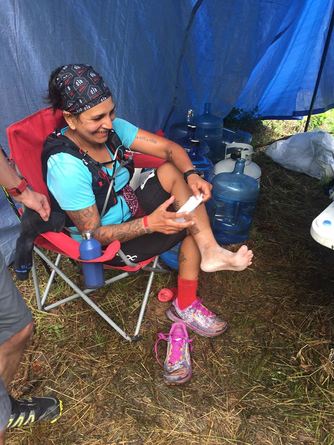 Camp Morganton (50.2Mi) to Stanley Gap (69.1) I had rolled into Camp Morganton while it was still dark, but by the time I finally made my way out of there, it was daybreak. I hadn’t eaten anything and being low on calories made me irritable. I reached for some bars in my pack, and as I slowly hiked up a hill, there was a bleak ray of sun peering through the thick clouds of fog. It was beautiful! I reminded myself that I had to get moving fast, as within a couple of hours the 50-mile runners will be out running the trails. I made my way back to Deep Gap for the third time and continued onto the loop. The loop sucked! It was muddy as hell, and there was absolutely no running happening. It was going to be a mud slog! Somewhere in the middle of the loop a few guys came flying by, which I assumed were the 50-mile runners, and by loose estimation I figured it was around 9 a.m. on Saturday morning. Back to Deep Gap for the fourth time, I was in and out, making my way to the horrendous drop at Weaver Creek Road. The sun was out, and it was once again turning into an armpit. As I started the trek back up Weaver Creek, I paced with Simone Valentin Austin. It was Simone’s third time running Cruel Jewel, and she mentioned it was probably the worst conditions she had encountered during the race in the past two years. Simone was kind enough to share some coconut water with me, which at that point in the race proved to be my go-go juice. Stanley Gap (69.1) to Skeenah Gap (85.4) I was so looking forward to seeing my crew and having Tim along for the next stretch of the race. We didn’t waste much time at Stanley Gap and continued forward. I saw Simone and her crew and bummed another coconut water from them. It was nice and cold, and it felt refreshing! By the time we hit the pavement, my feet were starting to hurt and running the exposed stretch of the road made it mentally difficult. I stopped quite a bit before running again. At this point, I knew I would be looking at 40 hours for the finish. As long as I was moving, I’d be alright, as I was well ahead of any cutoff. Tim kept me moving steady, but there was no avoiding the pain in my feet and it slowed down my pace. Downhills hurt more than the up hills. We made it to Wilscot Gap where, I had a drop bag. I changed my socks and shoes for the third time and was horrified at the size of the blisters on both my feet. This isn’t my first rodeo, and I’ve never had blisters/foot issues in my past 10 100-mile races. Aside from freaking out A LOT, I knew there was nothing to do as the damage had been done, so I popped whatever blisters I could, duct-taped my feet and kept moving forward. By the time I made it to Skeenah Gap, every step felt like a stab and my feet were on fire. Skeenah Gap (85.4) to White Oak Stomp (97.9) I hit Skeenah Gap, and Corey was waiting for me with a coconut water. Say what?!? That coconut water is good stuff! Tim was off pacing duties, and Corey lead the way as daylight started to fade once again. This was the most miserable stretch of the race! It got dark, and the bugs came out and were flying at my headlamp like I was being attacked. I was tired, my feet hurt and my brain just about gave out on me. I had been at it for close to 40 hours. Every inch of my body was screaming for me to stop. I was walking a 30-minute mile. I complained, I whined and I asked Corey to stop. I would sit at every fallen tree and rock that we came across and close my eyes — and there was Corey with his red nightlight staring me in the face. He was the devil! I swear I wanted to punch him, because he wouldn’t let me sleep. I tried talking him into letting me nap for 15 minutes on a rock. Me: I just need 15 minutes to shut my eyes. I promise we’ll get moving after that. Corey: Nope! Me: Why not? I’m not chasing cutoff. Corey: Because if you sleep now I’m afraid I won’t be able to wake you back up and get you moving. I just sat there on the rock pretending to have not heard him and closed my eyes. Somewhere in the back corner of my brain where I was still functioning I knew Corey was right. If I fell asleep, I won’t be able to wake up. So, I pressed on with my death march. I was “sleep running.” Everything felt numb; I felt no pain, no sense of smell, no nothing. Yet, somehow, I was able to put one foot in from of the other. I also hadn’t eaten in the last 6 miles. Not only was I sleep deprived, I was also calorie deficient. Everything turned my stomach. The thought of peanut butter and jelly made me nauseous, and I could smell the ramen in my head. I just wanted some real food. We stopped once more because my feet hurt, and I figured adding another layer of socks might help. As I swapped my socks, I saw a tick embedded on my leg along the edge of my sock. I pulled at it and its mouth part snapped. I yelled for Corey: What do I do? Squeeze it and try to get it out, he said. I did as I was told and in doing so made a tiny hole in my leg where the tick was. Onward! While in my state of delirium, I stuck my pole in the ground only to feel something swirl on my pole. I looked down. I had stabbed a copperhead and it was now partially wrapped on my pole and hissing loudly. I shook the snake off my pole and jumped ahead to follow behind Corey. We could hear the copperhead hiss loud for a few seconds afterwards. Holy shit! That was enough to wake me up. After that, I tried not to sit on any trees or rocks and kept a steady hiking pace until we hit White Oak Stomp (97.9Mi).  White Oak Stomp (97.9) to Vogel St Park/Finish (106Mi) White Oak Stomp is the last manned aid station, and by the time Corey and I got there, it was dawn once again. The realization that I had now been running for two days and two nights set in, and I just wanted to finish. I was famished and felt like death. I sat at the aid station trying to muster my strength for the last 8.5 miles to the finish. I cringed at the thought of the next section we were about to hit, as it was 5 miles of downhills and I was completely useless going downhill at this point. I dreaded every step I’d be taking to get me to the finish. The volunteer at the aid station was kind enough to fix me an egg with cheese on a slice of bread — it was the best thing I had eaten in the last 24 hours. I was in heaven! I filled up my water and quickly pressed on to the next 1-mile climb before we started the descent. It was somewhere on the first decent that I heard someone coming up behind me as I commenced my death march. I turned to look back, and it was Samantha Turco. I had shared my water with her going down Weaver Creek, and she had been way behind me, but now to see her flying down the hill about to pass me. No way! I’m not ultra-competitive, but I don’t like people passing me in the last 10 miles of a race. Something about getting passed in the last few miles to the finish just blows my lid. I looked at Corey a few paces ahead of me and said, “Let’s run.” And we ran hard! I was flying down those hills, the same hills I had been dreading going down 30 minutes earlier. The sun was up, and it was a new day! Nothing hurt anymore. I’m not even sure how on earth was I running so fast down those hills. I passed five more runners and never saw Samantha again. Running felt great! We powered through to Wolf Creek (102.3Mi). I passed two more runners and, as I ran once again, my faith in what I do was restored. I love Ultrarunning! It’s miserable, it’s painful and it breaks you down. There’s no room for ego, and just when you’ve lost all your shit, it comes back to you. The joy, the exhilaration, the downhills, the grit and all that the human spirit is capable of enduring. Your entire life’s story can be told during a 100-mile race. As Corey and I made it to the last bridge before we hit the 1-mile section of the pavement to the finish, Tim was waiting for us. The three of us ran hard. I passed another runner before I crossed the finish. I had left it all out there in the last 8.5 of the 106 miles to the finish. And, finally, the buckle. My precious! I held the coveted buckle in my hands in a state of complete delirium and ecstatic bliss. I was finally done.  Conclusion: My feet were trashed! I threw out my shoes after I was done with the race, and I had blisters the size of eyeballs on my feet. Sound painful? More than anyone can imagine, but it was worth it! It’s always worth it! Cruel Jewel 100 is not a race to be taken lightly, in hindsight I wish I had made Cruel Jewel 100 my goal race for the year. I can’t stress enough to make sure you have a solid crew if you plan on running this race. Things can go from good to bad to ugly fairly quickly. Keep an open mind and your goals loose. Humidity is a B.I.T.C.H! To my pacers: Tim, you are rock solid! If you ever decide to quit your job and take on pacing full-time, I will happily be your pimp. Your time and patience are valued as a friend. I look forward to many more running, crewing and pacing misadventures with you! Corey, you are still the devil! That red nightlight will haunt me for years to come, but I’m so glad you didn’t let me sleep. Thank you for being there for me and patiently listening to me whine and complain about everything and then cranking the gears when I needed to run. I hope to return the favor one day when you decide to lace up for a 100 miler! Gear List
Shoes – Women’s Altra Timp Jacket – Columbia Women's Titan Lite Windbreaker II Socks – Fits Medium Hiker Crew Trekking Poles – Black Diamond Distance Z Trekking Poles Hydration Pack – Salomon Advance Skin 12 Set Vest Pack Headlamps – Petzl Nao Performance Headlamp Waist Light - UltrAspire Lumen 600R Waist Light Stories from “Out There” – The Barkley Marathon I was only about an hour into the 2018 Barkley Marathon, standing on top of the Pillars of Death, when I looked down and noticed my map was gone. Just freaking gone! My gut dropped. I looked around, feeling queasy. The two veterans I was keeping in sight had moved on. I hopped back and forth, scanning the area, only to conclude that my map was somewhere in the depths of the stone columns on which I stood. I considered climbing down the Pillars of Death in hopes of retrieving the hand-drawn map that I’d copied from the race’s master map the night before. I’d made two copies but was only carrying one on me. Dumbass! Time to take a breath, calm down, think…and pray.  The How It was March 2015 when my curiosity about the Barkley Marathon first took hold. I sat there in a van full of runners on my way to Urique, Chihuahua, Mexico to run Caballo Blanco, listening to Don Winkley talk about the legendry race and Lazarus Lake, the mad scientist behind it. Don told us how Barkley was “the world’s toughest foot race” and how bad things happened when you were “out there” Up until that point, I was aware of Barkley but had never met anyone who had run it. And I’d never considered running it myself. But, really, how insane could a race really be? Upon returning to the U.S., I began to the scratch the inevitable itch. How did you even enter the race? It was like piecing together a puzzle; no one ever gives you all the information. As I researched and read and learned more about the Barkley “cult,” there was this underlying sense of exhilaration — and fear — that set my heart racing. I researched more, learned more, networked more. I was finally able to learn how to apply, and later in 2015 I submitted my entry. (No, I’m not telling you when or how.) Those lucky enough to get into the race receive a condolence letter rather than a congratulation letter. I didn’t get one, but I landed on the “weight list,” which meant that Lazarus had seen something he liked in my application. Or maybe he was lining me up to be a future “human sacrifice,” the person who has “no business” running Barkley but whose certain failure provides comic relief. As I followed the slow progress of the weight list, it became apparent I wouldn’t be running Barkley in 2016. Fast forward to sometime later in 2016, and in my second year of applying I moved up the weight list. In fact, I was number 10! Panic set in as I realized I had a very high probability of making it into the 2017 edition of Barkley. I started training. Admission of stupidity: Up until this point I’d never held a map and compass in my hand, even though navigation is central to traveling the course at Barkley. I reached out to Al Beers, who at the time was vice-president of the St. Louis Orienteering Club. We’re fortunate to have a permanent orienteering course in St. Louis, so once a week I met Al and he helped me learn the ropes. I wasn’t very good at first, but I kept at it because, well, what choice did I have? I made it up to number three on the weight list for the 2017 Barkley Marathon, but once more received no condolence letter. So, I did what any stubborn and spurned ultra runner does and applied again. I patiently waited until, one afternoon while out running errands, my phone pinged to notify me of a new email message. I opened my inbox folder, and my heart skipped a beat. There it was: the much-awaited and dreaded condolence letter. I was in the 2018 Barkley Marathon! I was ecstatic!  Training As the realization of what I would be up against set in, a questioned emerged: How the hell was I going to train for the menacing elevation of Barkley? The steepest climb near where I live is no more than 340 feet per mile! I was at a major disadvantage and almost certainly lining myself up for failure, but lack of vertical was no excuse for not going out there and trying. Sometimes trying is all you can do, and I had to try. In short, my training plan consisted of registering 50-mile weeks with 10,000+ feet of vertical. I bushwhacked, a lot, mainly to get accustomed to running and hiking off trail. I figured that instead of pushing my mileage I’d condense my weekly average vertical, hoping this would keep me upright for a loop or two at Barkley. I also, reached out to Jeff Ryan, a board member of the St. Louis Orienteering Club, to help me brush up on my navigation skills. (Al had since moved away.) After a few rustic rounds of navigation with Jeff, I decided the only way I was going to learn was to do it alone. So, a few times a week I’d head out to the orienteering course, working on reading the map features and shooting bearings — and in the process getting lost and finding my own way out. By the end of my taper week, I’d gone from “where the hell am I?” to being able to pinpoint exactly where I was on the map and where I needed to go. I was comfortable getting lost in the woods, yet I questioned my ability to navigate at Barkley’s Frozen Head State Park.  Failure to Launch So, there I was at the Pillars of Death with no map. Was my race over even before it had started? Think…and pray. After a series of arguments with myself, I decided to wait for the next runner to come up behind me, hoping I could hang with them and try to knock out at least one loop. Just then, Amy Winters came around the bend. After a brief introduction and explanation of what had happened, we decided to work together. I would need to run at Amy’s pace, which I was fine with as long as we got through the first loop within the cutoff time of 13 hours, 20 minutes. Except it was going to be slow; Amy had a prosthetic leg and had been invited to Barkley because Lazarus wanted to see “if a girl with one leg could finish a loop.” I was instantly in awe of Amy. She moved exceptionally well on the ascents, much better than I did on two legs. It was truly admirable to watch. With me navigating and Amy keeping a steady pace, we made it to the first of the 13 books from which we would need to retrieve the page that corresponded to our bib number. All was not lost! Not long after that, another female runner, Melody Hazi, who had blown past book 1, caught up to us from behind, and the three of us navigated to book 2. At this point we were about three or four hours into the race, and Amy had already run out of drinking water. She didn’t want to fill up from the nearby creek because the filter she was carrying didn’t fit her bottles; we would hit the first water drop after book 4, though, so we went on. I offered to share my water, since I had a 2.5-liter bladder and another 20-ounce flask. Amy said she’d ask for it when she needed it. We grabbed our pages from book 2 and continued with Melody in the lead. We “scurried” up the high wall instead of going around it to save some time. Somewhere between book 2 and book 3, about five hours into the race, Amy announced she had exhausted her food supplies. I had a moment of panic but then realized I’d packed enough food to last me for 24 hours, and from there on out, I shared my food with Amy. This was also the moment I looked up to see that Melody was moving out of sight. I considered dropping Amy and continuing forward with Melody, but she was already ascending the crest of the hilltop. No big deal, I figured. If we ran into Melody or another runner later on, I could split with them. Does that sound cutthroat? Perhaps. But that’s the Barkley Marathon. It’s an every-person-for-themselves, last-person-standing kind of race. You need to be self-sufficient. There’s no margin for error; any small mistake can lead to a major catastrophe. This might mean you have to be ruthless and selfish in your decisions. If you’re working together to get from one book to another, and the thread breaks because you’re the weak link, then you get left behind. This coming from a person who had lost her map just an hour in! Anyhow, on our way to book 3, I overshot my bearing and, as we ran the trail and started to descend one of the switchbacks, I realized my mistake. Book 3 was on top of Bald Knob, so we backtracked and started the assent. We made our way to the hilltop and got our pages. I looked over the edge just as we were engulfed by a thick cloud of fog and a light, steady drizzle commenced. It was earie, and visibility was shot. Was it still daylight? It was hard to tell. As we made our way back to the trail, Amy mentioned she was worried about carrying on in the thick fog and the dark hours of the night that lay ahead because she did not have a headlamp. I didn’t know how to react to this…. How does someone attempting the Barkley Marathon forget to pack a headlamp?!?!?! Just how? In that instant, my fate was sealed. Time was ticking away, and with each passing hour, daylight faded. The rain became a thunderstorm, only getting worse as darkness descended (except for the occasional stab of lightening). I tried to stay positive and continue forward. We just needed to get through a loop, I kept telling myself, even if we were over the time limit. I had to empathize with Amy, because, whom am I kidding, I was the dumbass who had lost her map. Still, it was difficult to comprehend having not packed enough water or food — or a headlamp! — on what is considered one of the toughest 100-mile races in the world. I’d packed two headlamps with three sets of backup batteries, so doing the math I figured we could keep moving forward in the dark, but I wasn’t sure if my food supplies were enough for the both of us.  Following the park boundary on the “candy ass” trail, we made it to Garden Spot, took our pages from book 4, and put on our rain jackets and extra layers of clothing. Temperatures were dropping steadily, and showers were coming down with no sign of stopping. Every footfall felt like stepping in slop. In a rush, we blew past the water drop and ended up at a T on a Jeep road. I stopped, trying to figure out which direction we had to go, when Thomas Armbruster appeared out of nowhere. He had been going up and down the road in both directions for the past two hours, unable to find his way to book 5. He’d finally decided to throw in the towel and was headed back to camp on Quitter’s Road, where it would take him another three hours to reach the start/finish line at the yellow gate. Not even quitting Barkley is easy. Self-extraction is mandatory, and if you dare to go out there, then you better be able to get your arse back. Help is not coming. After a brief chat with Thomas, we decided to continue to book 5 in the same direction that Melody had taken. I wasn’t sure if we were headed in the right direction, as none of this was on the map — no Jeep road, just directions that were hard to follow. I couldn’t shoot a bearing and follow that because we’d technically be cutting course. Wandering for an hour in the downpour, Amy and I were nowhere close to any of the landmarks mentioned in the course directions. It was getting dark, and I handed my spare headlamp to Amy. I stood staring down at the map, trying to find any recognizable landmark. I was completely drenched and hypothermic, my hands shaking and rain pouring off the bill of my jacket hood like it was an awning. I told Amy we needed to backtrack to a point where I knew where we were on the map, then shoot a bearing for Stallion Mountain. Amy didn’t want to go back and asked if I could take a bearing and continue on. Shooting a random bearing would be futile and dangerous since we had no idea where exactly we were and I was hypothermic. We hiked back up the Jeep road, and after getting a better handle on our location, it was mutually agreed that we needed to head back to the yellow gate. I shot a bearing straight for Panther Gap Trailhead, and we took the trail back out to the parking lot. On our way back to the yellow gate we picked up Leonard Martin, who had turned around after book 8, unable to ascend the epic climb at Rat Jaw due to poor footing, torrential downpour and no visibility. As the three of us hiked back to the start/finish to face our demise, I was shivering and couldn’t think straight. Back at the yellow gate, we each earned a round of taps on the bugle, as all quitters do. I gave Amy a hug for our time shared together and made a B-line for the car to dry off and get some food to eat. And, just like that, my Barkley Marathon experience was over. Conclusion I have a lot of mixed emotions about what happened out there. Sigh! To say I’m disappointed in myself would be an extreme understatement. I’d like to think that sticking with Amy was the right thing to do, but there’s another part of me that wonders what would’ve happened if I’d stuck with another runner instead. What if? I sit here second-guessing the choices I made that resulted in my failure, my inability to finish a loop. The question is not how but whether I’m ready to deal with the aftermath. Barkley is unlike anything I’ve ever done, and I doubt anything will ever come close to my experience of being “out there.” I went into the race unsure of my orienteering skills but came back feeling confident in my ability to navigate. I know that I need to move on with rest of my racing season but somehow can’t. Anyone who has run Barkley knows how the race gets in your blood and poisons you for good. Everyone who passes the yellow gate on race day makes their own reality while out there. I hope I’ll be invited back to Frozen Head in the future, so at least I’m able to complete a loop. When I’m 70 years old, sitting on my front porch, smoking my pipe, I want to be able to look back and say, “I was really, truly ‘out there.’” To my crew Brad Kovach and Tim Garvey: Thank you! Your support was invaluable, and I will always be in debt to you guys for being “out there” for me. Ode to “Out There” Out there it’s beautiful Out there is where it’s wild and untamed Out there is where time gets fast but everything else gets slow Out there you create your own reality Out there is where dreams go to die Out there help is not coming Yet “Out There” is where I long to be. Gear List
Shoes – Women’s Altra Timp Rain Jacket – Showers Pass Women’s Refuge Waterproof Jacket Shirt – 32 Degree Long Sleeves Base Layer Jacket – Pearl Izumi Women’s Fly Softshell Run Hoody Pants – Showers Pass Women’s Track Pants Socks – Fits Medium Hiker Crew Gloves – HEAD Sensatec Running Gloves Trekking Poles – Black Diamond Distance Z Trekking Poles Hydration Pack – Osprey Women’s Dyna 15 Hydration Pack Headlamps – Petzl Nao Performance Headlamp and Black Diamond Icon Headlamp Self-Doubt, Uninstalling! I’m not a super analytical person. In fact, most decisions in my life are based on emotion and how strongly I feel in the moment. But I do plan my racing season well in advance. So, there I was in December 2016 with three 100-mile races on the radar and a few other ultras to fill in the gaps. I had zeroed in on Bighorn 100 in June 2017 as my goal race for the season — and my Hardrock 100 qualifier. Let’s do this! But, of course, life rarely ever goes as planned. At Bighorn, I found myself chasing the cutoff and made the decision to drop out at about 70 miles. The muddy trail conditions and nasty weather had tanked many a solid runner, and I was one of them. But I had based the decision on logic (i.e. mathematics) rather than emotion — and immediately after I made the decision, I regretted it. Bighorn 100 was my first DNF ever and a hard pill to swallow. As I sat on the plane on my flight back to St. Louis, all I could think of was that I needed to finish a mountain 100-miler and get a Hardrock qualifier…and that’s how I ended up entering the IMTUF 100. IMTUF 100 is notorious for its steep and relentless climbs, unpredictable weather and technical terrain. (To call the course sadistic would be an understatement.) It’s also a Hardrock qualifier and the only 100-mile race that’s part of the 2017 US Skyrunning race series. But none of that mattered at the time. I saw the elevation profile for IMTUF 100 — more than 20,000+ feet of elevation gain — and I knew it was the race I was going to run. I got back home, texted Amanda Smith to ask her if she would pace me and received the response, “I got you.” I didn’t need anything more. But, as Jameson Frank wrote, “Our greatest battles are those with our own minds,” and as IMTUF approached, I let self-doubt creep in. Rather than trust my ability to finish the race, I put my trust in uncertainty. Had Bighorn been a fluke, or was I not up to the task? When I should have been changing my relationship with fear and the fear of failure, I was instead dwelling on “I’m not good enough.” I hoped come race day my nerves wouldn’t deny me a strong performance. Opening Credits Race: IMTUF 100 (Idaho Mountain Trail Ultra Festival); in “real” miles the race clocks in somewhere between 102 and 106. Race Directors: Jeremy and Brandi Humphrey Location/Course: McCall, Idaho. IMTUF 100 is alpine to the core. Starting and finishing at the famous Burgdorf Hotsprings at approximately 6,115 feet with runners ascending Bear Pete Mountain to Squaw Point at approximately 8,000 feet, the race tackles some of the most rough and rutted trails and summits of this premiere mountain playground. Crossing eight high passes and gaining around 22,000 feet, this world-class course was crafted to be tough and breathtakingly scenic. In 2017, IMTUF ran a counter-clockwise loop, and changes direction each year. Difficulty: Extremely Rugged and Hard Time Limit: 36 Hours (100 Mile) Runner: Shalini Kovach Pacer: Amanda Smith Goals & Training: (a) 32 Hour Finish (b) 34 Hour Finish (c) When shit breaks down… just f*$king finish! As for training, I ran straight up vertical, as much vertical as I could get here in St. Louis. I have a bit of OCD, and it helps when I’m zeroing in on a goal. I averaged 60+ miles each week with approximately 10,000 feet of gain. I’m not a big fan of hill repeats, so I bushwhacked and ran some steep sections of the forest that wouldn’t necessarily qualify as trails. I ran slow but steady and power-hiked a ton, with some tempo runs thrown in, too, and a few overnight long runs. My training was as good as it would get living 600 feet above sea level. Race Report: As race week approached, the one question that circled my head day and night was, “Am I good enough?” I’ve never felt so unsure of my ability to finish a race as I did going into IMTUF. I felt inadequate, nerves high, as I struggled to find my footing. Amanda and I flew into Boise, Idaho on Thursday, hung out, loaded up supplies and drove three and half hours to Secesh Stage Stop, our “luxury” crash pad for the weekend. Friday morning when we woke up, the weekend weather forecast was calling for sub-30-degree temperatures overnight and highs only in the 50s. Since I hadn’t packed any running tights, we decided to make a run into McCall in hopes of finding some long pants to race in. As fate would have it, all I could find was yoga tights in size large; they fit in the legs, but the waist was big. No worries, I could manage. At packet pickup, I got behind a girl and asked, “Hey, is this the line?” She turned to me and started talking, and I stood there completely flabbergasted trying to put a name to the face…. Holy shit, it was Anna Frost! I was talking to Anna Frost! As we made it to the pre-race gathering, I nervously chatted with a few runners, and I soon stumbled into the joke of the evening. Runners: Hey, where are you from? Me: St. Louis. Runners: (With a surprised, somewhat uncertain look on their face.) So, how do you train for something like this in Missouri? Did you run up and down the Arch? (Or.) St. Louis, Missouri, where is that? Midwest is what we fly over. I heard this multiple times at the pre-race meeting, at the start of the race and during the race. I became “St. Louis” to everyone, and every time a runner would pass me or vice versa, I’d hear them call out, “Hey, St. Louis!” As a result, even while I battled the demons in my head and blew off the comments, all this talk had me questioning my ability to finish the race even more. A few of the runners I’d spoken with had run IMTUF previously, and many of them had impressive racing resumes with races like Hardrock 100, Bear 100 and Bighorn 100, to name a few. Most everyone I lined up to race with was from Idaho, Colorado, California or some other mountain state, and then there was me from St. Louis, 600 feet above sea level and the only flatlander out of the 141 runners that started the race. “You don’t belong here,” said the voice in my head.  Maxim Kazitov and I before the start of the race Maxim Kazitov and I before the start of the race Start Burgdorf to Lake Fork Trailhead (44 miles) Headlamps ready and the sound of the elk bugle ringing through the frigid air, we hit the trail running at 6 a.m. The temperature was holding steady at about 26 degrees. Amanda said good luck to me, as the next time I’d see her would be at 70 miles, sometime early Sunday morning. The first few miles were nothing more than a power hike, as I got behind a few runners and chatted with Anne Crispino-Taylor, whom I’d been introduced to through a mutual friend. Two things that I was unnervingly aware of were my elevated heartrate and the cloud of “moon dust” that I was inhaling. As we got to the top of the first climb at Bear Pete, the view was absolutely stunning! I stopped to take a few photos, and this gave me a chance to slow my breathing a bit, take in the scenery I remind myself that this was what I lived for: the present moment. And in that moment, I was glad to be standing right where I was. As I started to run again, we were descending. I ran hard, as I love me a downhill, making it past Cloochman. There was a quick stop at Upper Payette #1, and I kept on rolling with Anne all the way though North Crestline, about 24 miles into the race. At this point, I decided to slow my pace, as my heartrate was high and the climbs were becoming labored. Still, I ran steady. All I remember was the descents were just brutal; there were sections we ran on rocks, rut and more rocks, and I had rolled my ankle at least twice. Nothing major, though, as I was still on pace for that 32-hour finish when I rolled into Lake Fork at 44 miles. I paced with another runner as we hit Lake Fork. As I made my way to the aid station, I was being cheered by three women. I said hello to them, and as I turned to walk off, one of them looked somehow familiar. I stopped and did a double take, locking eyes with Nikki Kimball. As I smiled ear to ear she ran over to give me a hug and all I mumbled was, “Thanks for the hug. This made my day!” A few things to note before I ramble on. Regarding the “moon dust,” it was crazy ridiculous on these trails, in some places 3 or 4 inches deep, and not only do inhale it the entire race but it is in your mouth, ears, nose, eyes and any other exposed body part. Also on this note, change your socks and shoes as many times as you can if you want to finish the race without major foot issues, and make sure you fill up water and food at each aid station, as those climbs can take up more time than you anticipate and some aid stations are 7 to 8 miles apart — and feel like 13 to 15. Lake Fork to Upper Payette #2 (70 miles) Ah, Lake Fork! This aid station is the bomb! It was where a lot of runners were picking up pacers, so there was a crowd of people, and the aid station had brick-oven pizza. (I passed even though it looked awesome.) Lake Fork is also where I had to pack all my gear for the overnight stretch, load up water and fuel, and double check to make sure I hadn’t forgotten anything. As I sat there digging through my drop bag, contemplating the extra layer of shirt and heavier long pants, Bill Losey sat next to me and the conversation starter was the Bighorn shirt I was wearing. Bill: So when did you run Bighorn 100? Me: Ha, if you call it running. I was out for the race this past June and dropped at miles 70. The next thing I knew I was telling Bill all about the DNF and how I hated myself for having made that call. We chatted for a bit as both of us changed gear, etc., and come to find out that Bill had run Hardrock 100 a couple of times, Bighorn 100, Bear 100, Angeles Crest 100 and even Barkley Marathon a few times. Serious badass! Yet here he was telling me he just needs to finish IMTUF. Me: Huh!?! Why wouldn’t you finish? With all your races, you should have nothing to worry about. I’m the one who needs to be able to finish this beast of a race. Bill: I haven’t run a 100-mile in three years, and I don’t want to DNF, as I have a long drive back to Colorado and spending that much time in my head after a DNF will not be good. With that said, Bill was gone. I gathered my stuff and, after a series of arguments with myself, decided to add the fourth layer of shirt for the overnight stretch — a decision I would not regret when temperatures dropped well below 25 degrees and many runners were dropping due to fatigue and cold. As I made my way to Snowslide, my conversation with Bill had catalyzed something inside me: I was no longer questioning “Do I belong here? Do I have it in me to finish? Am I good enough to finish?” Instead, I knew I had to finish this race! I ran hard, it got dark and it was bone-chilling cold, but I was in my element. I love running at night! It was a clear night, and the crescent moon shown. It was perfect until I started to descend and found myself turned around at the bottom of the same hill having made the same loop twice. WTH!?! I stopped and waited for a couple of runners coming down and followed them out to the aid station. Snowslide to Duck Lake was a blur. I was in and out of the aid stations. I had 10 more miles to go until I would hit Upper Payette #2 once again and pick up Amanda. I was looking forward to having some company and hammering out the last 30 miles. At this point, a 32-hour finish was still in sight, but let me tell you, this course is so freaking deceptive. As I made my way to Upper Payette #2, I was losing all depth perception in the light of my headlamp and the thick clouds of moon dust, which was ankle deep in places and making for a treacherous descent. Part of it was fatigue setting in, and I lost footing in a couple of places only to find myself on my rear. As I tried to steady myself, I rolled my ankle for like the fifth time in 10 hours — but this time when it happened I experienced a stab of pain running on the inside of my right leg all the way deep into my right hip. F*CK! This was bad. I knew I had done a number on myself. I’m a trail runner; I roll my ankle all the time, dust it off and keep running. But this was not just another ankle roll. I knew I had tweaked something, but I pressed on with some pain in my hip and my ankle being totally uncooperative. Going downhill was sheer torture at this point. I could power hike with minimal stress, so I did just that all the way to Upper Payette #2. Upper Payette # 2 to Finish Burgdorf (Somewhere between 102-106 miles) By the time I hit Upper Payette # 2, I was unsure if I’d make it to the finish in 32 hours — but that was the least of my worries as I still had 30+ miles to cover before I could say I made it. I was relieved to see Amanda waiting for me. I made a B-Line for the chair, swapped shoes and socks, and could not ignore the swelling that was fast growing in my right ankle. UGH! I typically stay away from anti-inflammatories while racing, but right there and then I didn’t even think about it twice. I popped some ibuprofen, got some food and coffee, and was out of there as quickly as I could. Upper Payette #2 was a runner’s graveyard, and I didn’t want to become one of dead. Amanda and I hiked steadily, and ran when I could, until we started to make the climb up Diamond Ridge. It was daylight, and unlike most runners when daybreak gives them an extra push, for me daybreak is when I’m at my worst. The realization that I was now looking at a 34-hour finish had sunk in. I was frustrated with myself, as I could hardly run the downhills, but Amanda kept me talking and moving, and before long we were at Chinook, about 86 miles into the race. Gear change, stock up on food for later and we were on our way again. It was starting to get hot! How hot you ask? Well, I got sun burnt in my face and that rarely ever happens. With a 34-hour finish still in sight, we made the most sadistic climb (or so it seemed) on the entire course only to drop down and do an out-and-back at Lone Lake, mark our bib and make our way to Willow Basket for a second time. What is the point of this torture? Lone Lake! But wait, what is this? It was the most beautiful and refreshing sight! Lone Lake! I loved Lone Lake! Amanda and I took some photos and pressed onto Willow Basket. I was starting to hit a massive low as we made it past the aid station. I was reduced to hiking, and the frustration of not being able to run some of the so-called “runnable” terrain that lay before us made it twice as hard to press on mentally. Nine more miles; I had to do this for 9 more miles! I can do this. I’m freaking going to finish this! Sigh! I was running low on calories, and the sun reflecting off the mood dust made me dizzy. I was hot and then I was cold and then I for sure thought I had lost my mind. Amanda: Stop, you need to eat something Me: I just can’t eat anymore. Amanda: OK, well, you have to eat. We still have 6 more miles to go, and you need to eat. Here have a gel. Me: Gah! I hate these hills. I even hate the downhills, and I just want to run flat — but don’t tell anyone I said that. We both laughed so hard at that. Two gels later, I managed another couple of miles before I had to take another gel. I felt like the walking dead. The 9-mile stretch from Willow Basket to Ruby Meadow just sucked. I asked Amanda what time it was and soon realized there was no way in hell I was going to make the 34-hour finish unless I start running, and running hurt. I tried, but the pain in my right ankle and hip was unbearable. I took another ibuprofen just so I could push myself to run. Then, out of nowhere, while I was still complaining, we were on the road 2 miles from Burgdorf. I was miserable to the point that I refused to run. I still had a chance to get it done under 35 hours, but I was so frustrated with myself and my inability to run the last 9 miles that I didn’t care what time I finished. I knew I was going to finish, and that was that! Just then, Amanda announced we were 100 yards from the finish and I had to run. Fine! “I’ll run but I hate you for making me run,” and with that I was off as I made an effort to “sprint” to the finish. My official time was 35:08:49. A few stats from the race: 141 runners started, 86 finished, 41 dropped (DNF). Only 33 runners broke the 30-hour mark, and of those, about a third came in after the 29th hour. I was the 80th runner to finish, 21st female and 9th in my age group, 40-49. Conclusion:
IMTUF 100 is a gem of race! I hope to be back to run the loop clockwise in 2019, and although it was not my best performance, there’s always reason to believe that the next 100 miles will be better than the last. Isn’t that what we thrive on? I got what I was after with finishing IMTUF: a ticket into Hardrock 100 and a renewed sense of accomplishment! IMTUF also marks the ninth 100-mile run I’ve finished (minus Bighorn 100) since I first embarked upon this journey in 2014. I’m still learning, changing and challenging myself and I don’t ever want this process to stop. I don't want normal and easy and simple. I want painful, complicated, difficult and life changing! To my pacer Amanda: If only you knew how much I appreciate you being there for me! Running is a selfish endeavor, and to have likeminded folks who will support your sorry ass no matter what is something to cherish for life. I value your time, patience and our friendship and, most importantly, all the bullshit talk that I hope is never disclosed outside of the trails. Thanks again for having my back! To my sponsor Hammer Nutrition: Thank you so much for making IMTUF 100 happen for me! Thanks for understanding the needs of endurance athletes and making innovative products that help us achieve our goals. In my three years of racing on team Hammer, I have never once had fueling issues, GI stress or any of the other commonly reported issues when attempting these types of events. Hammer on! Gear List Garmin Fenix 3, Altra Women’s Lone Peak 3.5 and TIMP, FITS Socks Medium Hilker Crew, Petzl NAO Headlamp, Some random brand yoga tights, Hammer Nutrition Women’s Running Tee Shirt, Hammer Buff, Hammer Beanie and Salomon Advance Skin Set 12 Pack. Nutrition Here’s a breakdown of the fuel and supplements I used before, during and after the race: Pre-Race Hammer Nutrition Race Day Boost and Hammer Nutrition Fully Charged During Hammer Heed and Perpetuem mixed equal parts in one 17-ounce bottle; Hammer Gels (Peanut butter and Espresso flavors); banana, chicken broth and tortilla wraps at aid stations. Every three hours, I took Hammer Endurance Amino, Anti-Fatigue Caps, Endurolytes and a Ginger Root Pill. Post-Race Hammer Recoverite and Tissue Rejuvenator Author: Shalini Kovach is the founder and lead organizer of Terrain Trail Runners. The Miwok 100K, held in the Marin Headlands north of San Francisco, is a legendary race now in its 22nd year — and it has a lot of history. The race is fabled to be one of the most beautiful and iconic ultramarathons in the U.S. I met Tia Bodington, the race director, at the American Trail Running Conference back in September 2016, and that piqued my interest to the point that, when I started to lay out training races leading into the Bighorn Trail 100 (my next big race for 2017), I kept coming back to Miwok. Call it fate, good luck or mere coincidence, but I was one of the 500 runners that made the lottery for the 2017 Miwok 100K. As race date approached, I felt confident in my training and set an ambitious finish goal, but, as we all know, ultrarunning is one of the most unpredictable endeavors ever…. Opening Credits Race: Miwok 100K (62.2 Miles) Race Director: Tia Bodington Location/Course: The course features fire roads and single track, and the 2017 course modification had a couple of miles of paved road. The course is hilly (approximately 11,800 feet of elevation gain and 11,800 feet of elevation drop), with spectacular views of San Francisco and the Golden Gate Bridge, Mt. Tamalpais and the Point Reyes National Seashore. Difficulty: Hard Time Limit: 15 hours, 30 minutes Runner: Shalini Kovach Crew & Pacer: None. The race is extremely well supported. Aid stations and drop bags are accessible, and for 62 miles through the woods there was no need for a pacer or crew. Goals & Training Well, I was hoping for a 13- to 13.30-hour finish, and, don’t ask me why, but my head was stuck on that time. Of course, getting to the finish is always the top priority. As for training, leading into Miwok 100K, my peak mileage week was 65 miles with an elevation gain of 10,164 feet. I simply focused on climbing and running lots of technical terrain. Race Report As the saying goes, “Getting to the race start is an unpredictable victory.” I found myself with a sore throat and stuffy nose on Wednesday, three days prior to the race. Ugh! Like most any “stable-minded” ultrarunner would do, I started to heavily self-medicate, and by Thursday morning, I was a walking zombie. I dreaded the fact that I had a race in two days and that my finish goal, although not completely out of the realm of achievability, was going to prove somewhat difficult to attain given my state. Regardless of how the race would break down, my bags were packed and I was on my way to the airport on Thursday afternoon. Start to Muir Beach (8 miles) It was 4:45 a.m. on Saturday, May 6, as we lined up to start what would be 62.2 miles of some challenging, quad-busting but incredibly breathtaking views for 14:24 hours under the California sun! My cold at this point had become a full-blown sinus infection, and lingering symptoms like mild headache, stuffy nose, ear ache/popping, loss of smell and little to no hearing in my right ear were becoming hard to ignore even as I stood there being swept away by the electrifying energy at the start of the race. I had also decided not to take my sinus medication but rather stow it in my hydration pack, a decision that would save my rear mid-race when all my bullheadedness wore off. The clock stuck 5:00 a.m., and we were off! On recommendation from a few others that had run the race, I had lined up to the front of the pack, so as to avoid getting stuck in a conga line at the start of the race up the steep Dipsea Trail climb. We immediately funneled onto the single track as we climbed 2,000 feet in just under three miles. The cold Pacific air made it difficult to breathe as I climbed and tried to keep my footing steady in the light of my headlamp on the stairs, dodging the gnarly roots and rocks. As we turned to descend the Deer Park fire road, I could hear a faint sound of the bagpipe being played at the Cardiac Aid Station. It was a pleasant wake-up sound, and I could see the sunrise far out in the distance. What made it even better was the steep descent that followed. It was like someone had just shaken me out of my funk. I was hot-stepping the downhill and passed a few runners as I made my way in and out of Muir Beach Aid Station.  Tennessee Valley (13 miles) to Bridge View (18.6 miles), then back to Tennessee Valley (26 miles) By the time I hit Tennessee Valley Aid Station for the first time, I had shed all the layers I had started the race with and was somewhere between feeling hot and clammy. I refilled all my supplies and was on my way. I don’t recall much of what and how I was running, except that as I climbed over the hills, there was the panoramic view of San Francisco Bay, the Golden Gate Bridge and the Pacific Ocean. It was breathtaking, both literally and figuratively! I was having difficulty breathing through my nostrils, and breathing through my mouth was extremely labored when climbing. My ears popped as I tried my best to enjoy the view and not let the constant thumping in my head bother me. My pace was excruciatingly slow, and this is when I decided not to focus on my goal finish time and instead to enjoy the scenery. As I made my way back to Tennessee Valley the second time around, I was feeling sluggish — not quite halfway done and here I was just hating on myself. Another runner came up behind me and said, “Whew! Glad we made it out of there 30 minutes before the cutoff.” As we chatted on how tight the cutoff was given the difficulty of the terrain we were all hiking, the sun was out and it was starting to warm up quick. 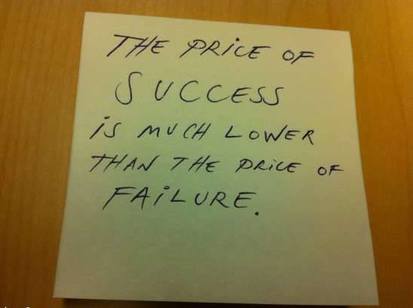 Muir Beach (30.3 miles) to Cardiac (35.5 miles) to Bolinas Ridge (42.5 miles) I felt a little unnerved about making the cutoff at Tennessee Valley by only 30 minutes simply, because I was unable to keep a steady pace and there was a sinking feeling of not being able to make the cutoff at Randall a few hours later. This is when I came upon Troy Meadows; it was his first 100K, and I noticed he was doing the “duck walk.” As we chatted, he mentioned having some knee issues, and I offered him some ibuprofen. As I reached into my pack for the ibuprofen, I saw my sinus medication. I debated in my head whether or not to take it, and if it would help at all. But, seeing as I wasn’t exactly doing all that hot and had been feeling worse as the day progressed, I decided it wouldn’t do any harm to take the meds. Here goes nothing! Somewhere along this part of the run, I had actually started enjoying myself. My guess is the meds had kicked in. This is when I came upon Robert Myers. Deja vu! No, I mean for real! Robert and I had run a few miles together at Western States in June 2016. Robert lives in Auburn, and I’m from St. Louis, and here we were together again 10 months later. What are the odds of that? As we chatted and ran along, something inside me had turned on…I guess you could say it was the faith in ultrarunning and in myself. I was about 30 miles into Miwok, and I knew slugging along at the pace I moving was not going to cut it, so I decided to run. I ran steady until I hit Bolinas Ridge Aid Station at 42.5 miles. This was one of my favorite trail sections on the course, the gorgeous Redwoods towering over the trails providing shade from the sun and the moss swayed in the cool breeze. For the first time in over 30 miles, I felt connected with running, the trails and my surroundings. This is what I live for! If I had all day, I would have simply wandered off into the woods. This was also one of my favorite aid stations on the course. For starters, leading into the aid station were two motivational signs that resonated with me. The first one read, “The price of success is much lower than the price of failure,” and the second one read, “You can either throw in the towel or use it to wipe the sweat off your face.” I know they were both a bit cliché, but when you run distance, you must find something to hold onto if you want to continue forward — and these messages were mine to hold onto and move forward. As I approached the aid station and the volunteers started to top off my water, I was told I needed to drink more than I had been drinking. It dawned on me that I had hardly been drinking and needed to stay on top of my hydration if I was to make a run for the finish. Randall Trailhead (49.2 miles) to Bolinas Ridge (55.9 miles) I felt great leaving Bolinas Ridge at 42.5 miles, I was running hard and pushing pace and — finally — hit the turn to the downhill bomb to Randall Trailhead at 49.2 miles. Weeeeeeeeeeeeeee! I love downhills. I really, really do! As I made it to the bottom of the hill, I cut a B-line for my drop bag, refilled everything and I turned to ask a couple sitting next to me what time it was. The couple: “It’s a little before 4 p.m.” Me: Doing the math in my head…. “I don’t need the headlamp, I’ll be at the finish well before 8 p.m.” The couple: “NO! Take the headlamp just in case you roll an ankle or bust something.” Me: “Good point! Should I take this jacket, too? It’s too hot right now.” The couple: “YES! If you are struggling and it gets dark you will be cold.” Me: “OK, OK, you are right!” As I turned to make the steep climb back the same way I had come a few minutes earlier, all the way out to Bolinas Ridge for the second time, I happened up Andy Black. Who is Andy Black? Well, stalk him on ultra signup and find out for yourself. Super badass ultrarunner, and I wasn’t going to just keep running past him, so I decided to hike up the hill with Andy and share stories. As we made it up the hill, Andy once again reminded me I needed to run and not kill my time chatting with him. Me: “Yes, I know! I’ll start running here in a few.” So, I bid goodbye to Andy and told him I would look for him at the finish. With that, I was running hard again. I was in and out of Bolinas Ridge the second time with a quick shout-out from the volunteers: “Go get it! Just 6.3 more miles to go!” Stinson Beach Community Center AKA Finish! (62.2 miles) After leaving Bolinas Ridge, I kept running steady once we hit the Coastal Trail. About a quarter mile behind me was a line of eight or 10 runners gaining on me, and in my head I knew I had to keep plugging at it. I had no concept of what time it was and where in the race I was, but having run enough ultras, I know the last 5 miles to the finish are critical and can make or break your finish time. So, I just focused on moving forward, and each time I saw a runner up ahead, I reeled them in. I only slowed down on the technical sections of the trail, so as to not fall. I had finally made it to the Matt Davis Trail. Earlier in the day, Andy Black had mentioned to me how steep the descent was — technical, rocky and root-strewn. The last 2 miles of switchback to the finish had it all, with wooded stairs thrown into the mix for good measure. This was it: I had to make a run for it. I ran hard as I spiraled down the steep descent with tricky left turns and low-hanging branches. I had to stop and limbo three times under some fallen trees. I passed eight runners slowly making their way to the finish as I bombed the hills recklessly. There it was, the big rock signifying the final switchback. Across the bridge over the creek, and the final downhill stretched into town. I was levitating! Or maybe it was all in my head. Not knowing what the race clock said, I was through the finish, got my medal and stood there talking with Stan Jensen. Who is Stan Jensen? Well, look him up! Conclusion I didn’t make my goal time. Am I disappointed? Honest answer: nope! As I was told by my BFF Denzil Jennings, “If you enjoyed it, then time is irrelevant.” I hate it when he’s right. Sometimes, you can’t fight your own body. Had I felt 100 percent and not been under the weather, would I have pushed for that finish goal and attained it? Possibly, but I don’t believe in “could have” and “should have.” This is trail running; you take what the trail gives you and how the day breaks down and you make the most of it. I made the most of Miwok 100K! Up next is Bighorn Trail 100 in June. Six weeks and counting! Bighorn will be the most difficult 100-mile races I will attempt to date, and I will be flying solo, no crew and or pacers. I’m confident in my training, and if these legs don’t fail me, I will see my arse to the finish and have myself a Hardrock 100 qualifier! (Still, seriously, ping me if you want to pace me at Bighorn.) Gear List
Garmin Fenix 3, Columbia Montrail Women’s Rogue F.K.T Shoe, Columbia Montrail Titan Ultra Short Sleeve Shirt, Columbia Montrail Titan Lite Windbreaker, Buff, InknBurn Spring 6inch Shorts, Injinji Trail 2.0 Midweight Micro Toe Socks, Petzl NAO Headlamp, Running Tee Shirt, Camelbak Ultra Pro Vest Nutrition Here’s a breakdown of the fuel and supplements I used before, during and after the race: Pre-Race Hammer Nutrition Race Day Boost and Hammer Nutrition Fully Charged During Hammer Heed and Perpetuem mixed equal parts in a 17-ounce bottle, Hammer Gels (peanut butter and espresso flavors), bananas and Coke at aid stations. Every three hours, I took Hammer Endurance Amino, Anti-Fatigue Caps, Endurolytes and a Ginger Root Pill. Post-Race Hammer Recoverite and Tissue Rejuvenator Author: Shalini Kovach is the founder and lead organizer of Terrain Trail Runners. I used to run alone in peace and conformity. I knew no other way until I met Sawyer. He’s my forever running partner. He slobbers a lot, digs in the leaves, wags and woofs — and it’s impossible to ride in the car with him while we drive to the trailhead. Welcome to whiny-town! But I can’t imagine life without him. As I write this, I turn to look at Sawyer, who’s never more than a couple of steps away from me. His big, brown eyes catch me in his gaze, full of mischief and curiosity. He makes me wonder if I could ever find a bond so strong with a human runner. Named after Tom Sawyer, from Mark Twain’s boyhood tale, The Adventures of Tom Sawyer, we adopted him from the Central Aussie Rescue & Support Center — and by “we” I mean my husband, Brad, and our girls, Erika, Chloe and Alissa. How did he come to be the best thing since Peanut M&Ms at an aid station, you ask? Well, it was one rainy afternoon in mid-May 2015 that we were out running errands, and I got suckered into visiting a pet adoption that was taking place, being told “we just want to look.” Like I hadn’t heard that one before. Thing is, I didn’t really want a dog. My life was already insanely busy, and to add the responsibility of having to take care of a dog — no thanks. But anyway, there we were looking at this wild thing. He had been a stray, just newly found, and he was frantically pacing and whining. We went into a small room where the girls could pet him and see how he interacted with them. He wanted nothing but treats, and then he’d run back to his foster mom. Maybe he was a little overwhelmed and nervous, she said. We got back in the car and then began the endless droning. “Please, please, please can we adopt Sawyer?” Ugh! As I sat there listening to all the arguments and proposals and deals that were being thrown at me, I couldn’t help but think how handsome Sawyer was. I reluctantly said we could go back and see what it would involve to adopt him. It was a faltering I will never, ever regret! Fast forward to June 2015. It was the weekend of Kettle Morrain 100, and I was to be out of town for the race. There had been some talk of bringing Sawyer over for a house visit while I was gone for four days. Good! I wouldn’t have to deal with it, or so I thought. I got back in town, completely wasted from running 100 miles, and there he was in our home. I wasn’t sure what to make of him, and he wasn’t sure what to make of me, either. He still had that timid, stray dog air about him. So, we ignored each other that evening. On Monday morning, Brad went to work and the girls were off to school, and there I was alone with Sawyer. What am I supposed to do now? I mean, he was still handsome and all, but I didn’t really want a dog. The dude just happily followed me around all day. Next thing I know, our contact at the Aussie Rescue called and said Sawyer had cleared all his medical tests and ownership searches, and that he was ours to keep if we wanted him. All we needed to do is sign a few papers. I’m not sure, I’m just not sure. I don’t think I want a dog. I put all my excuse cards on the table but was trumped by all the positive things that could happen if we chose to adopt Sawyer. The one thing that was laid on me over and over and OVER again was that his breed was so athletic and that he would make an excellent running dog. Ugh! But I like running alone. It’s my ME time. I looked at Sawyer, and if I’m being honest, I just didn’t have the heart to turn him away. And to see how excited the girls were to have him around…. So, I said yes, clearly stating that I was not going to run with him, as it would be too much trouble and I liked running alone. But, you see, it’s the simplest things that make us vulnerable, and when we least expect it, life can pleasantly surprise us.  As human beings, we often tend to complicate things. Relationships can sometimes end up becoming a tangled mess of emotions and feelings that never have an opportunity to grow or evolve. We resist and resent change. But it doesn’t have to be that way. If you willingly open your heart to a dog, they will shower you with unconditional love that knows no limits. A dog enters your life with absolutely no demands, and if you’re open to the possibility of adventures together, they provide you with irreplaceable memories that live forever in you. It’s that simple! So, here goes the tale of how I found the best running partner in Sawyer! While I was recovering from Kettle Morrain in June 2015, I decided to take Sawyer on a run with me. I hated every moment of it! He was on a leash, and I felt like I was being pulled beyond my control. My 5-mile “easy” run at a 10-11 minute/mile pace was turned into an 8 minute/mile sprint that I didn’t know I was capable of two days after running a 100 miles. We tried this a couple more times, and it was nothing but frustration. The dog needed training, and who had time for that? I decided I wasn’t going to run with Sawyer anymore, but each morning as I laced up, there he was, looking at me expectantly. I’d ignore him, and then the guilt of leaving him behind weighed on me so much that I couldn’t enjoy my run. There has to be a better way of doing this. Next run, I took Sawyer to the trail and decided to try him off the leash. It was 7 a.m., mid-week, a time when there was hardly any traffic on the trails. I was hopeful! Alas, as soon as I let him off the leash, he was gone. Just gone. Out of sight. I stood there completely horrified, as I had no idea where the hell had he run off to. There was anger and a weird sense of betrayal. How could he just bolt on me? I walked as I scanned the trails, calling his name, but Sawyer was nowhere to be found. After 10 minutes of yelling for him, I finally caught a glimpse of his furry face peeking at me from behind a tree about a quarter mile ahead. That’s it! I yelled at him, put him on the leash and was once again pulled into a sprint as we made our way back to the car. We tried this a few more times with no improvement. If Sawyer wasn’t sprinting a half mile ahead of me, he was chasing squirrels, deer and wild turkey — or molesting the occasional turtle on the trail. He would excitedly jump on other people that we came across, and if we happened upon another dog while on the trail, it was impossible to control him. He was incorrigible! But there was also something about him that connected with me deeply when we ran together. It was a feeling of freedom, limitless frolic, absolute euphoria that I felt when I watched him run. Seeing Sawyer run is a thing of beauty! I sometimes found myself wondering if I could ever run like that — effortless, free of inhibition, gliding over the terrain below my feet like the rocks and roots didn’t exist. It was absolute perfection! I dreaded running with him, yet I dreaded even more not to take him with me. How could a dog make me feel that way? 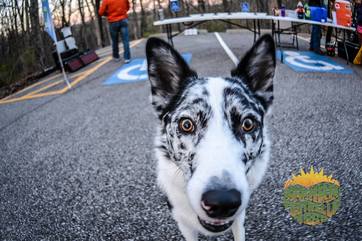 As the temperature got hotter that summer, I stopped running with Sawyer altogether. I’d take him on a hike now and then, but I had quit running with him due to the heat and also because it was frustrating that he just wouldn’t listen. It wasn’t until late fall and winter when I started to run with him again. At that time, I decided to keep him off the leash but carry it with me at all times. When Sawyer would take off, I’d stop and make him come back to me, give him a little talking to and then we’d be off again. If we came across other people on the trail, I’d call him and clip on the leash. I did the same when we’d encounter another dog. Slowly but surely, I was beginning to notice improvement. Sawyer had stopped chasing after deer, squirrels, turtles and or any other animals we encountered. He stuck to the single track and was never out of my sight, and he always stopped to look back and make sure I was in tow. He had also stopped jumping on other people that we came across on the trail, but there was still the issue of other dogs. This is when I decided to use the good dog, bad dog behavior encouragement. I started to take his treats on the run with me. If he didn’t listen to a command, he’d get an earful from me. His ears would fold back and he’d have that guilty-as-charged look in his eyes. Every time he’d listen to a command, I’d give him a treat along with positive reinforcement. Next step was running with Sawyer on the leash. If I felt I was being pulled, I would stop running, give Sawyer some talking to and then slowly start back up. A few frustrating runs on the leash later, and we had our breakthrough. One morning as I ran with him on the leash from our house, which is a little over a mile from Castlewood, he got the hang of it and stopped pulling my ass along. Once we hit the trail, I let him off the leash. We repeated the procedure on the way back, and I was excited to see he actually started running on pace with me while on the leash! So, there you have it! I’m closing in on two years of countless miles and adventures that I’ve been fortunate enough to share with mas loco Sawyer. I can’t imagine trail running without him. I’m glad I didn’t give up on him, and vice versa. I’ve found the most patient running partner, who never speaks a word yet shares with me a silent understanding and partnership that cannot be broken. Now if only he would stop charging at me in the middle of a run when he gets excited and wants to play, running in circles around me while I try to keep a straight face and not fall off the edge. But what would be the fun in that?
I will forever cherish every memory made running with Sawyer, and although he may never understand these spoken words, I do hope he knows how much I love him and the joy he brings to my daily life. Go run with a dog, and live a little! |
AuthorsOur blog writers are members of Terrain Trail Runners, local athletes just like you, who want to share their love and knowledge of the sport. Archives
March 2023
Categories
All
|

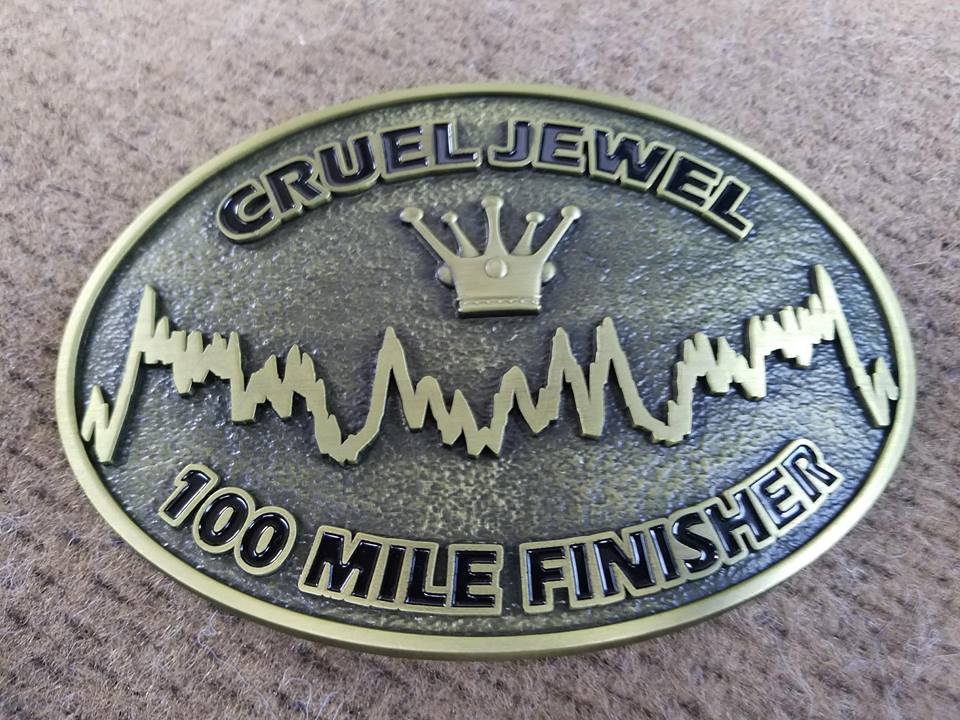


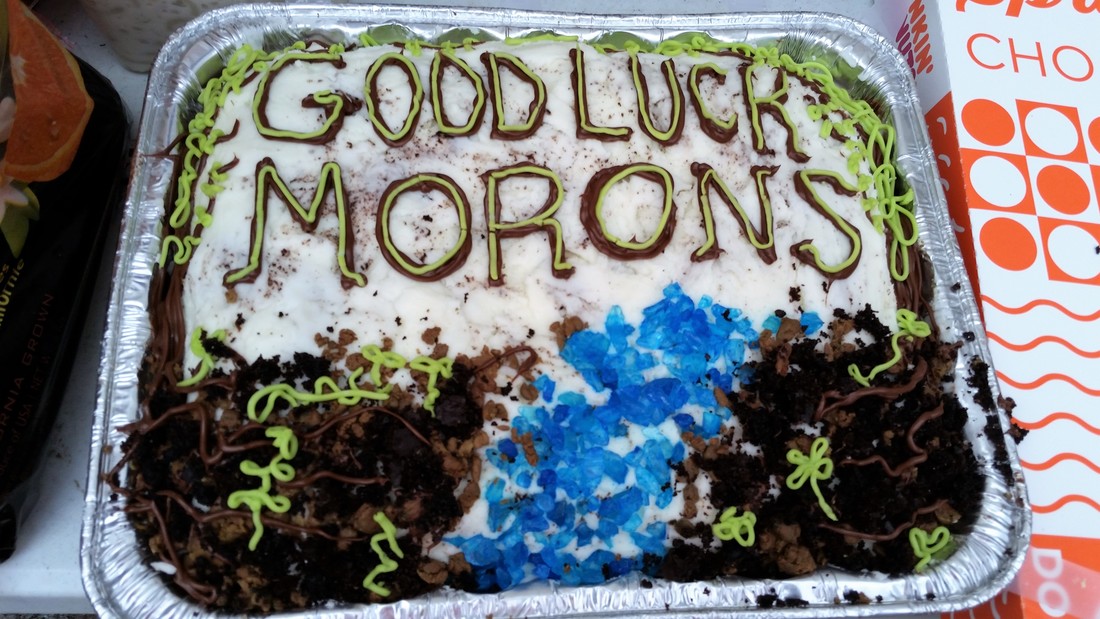

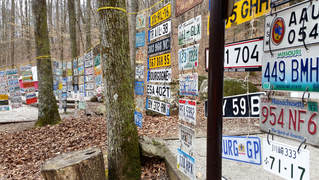


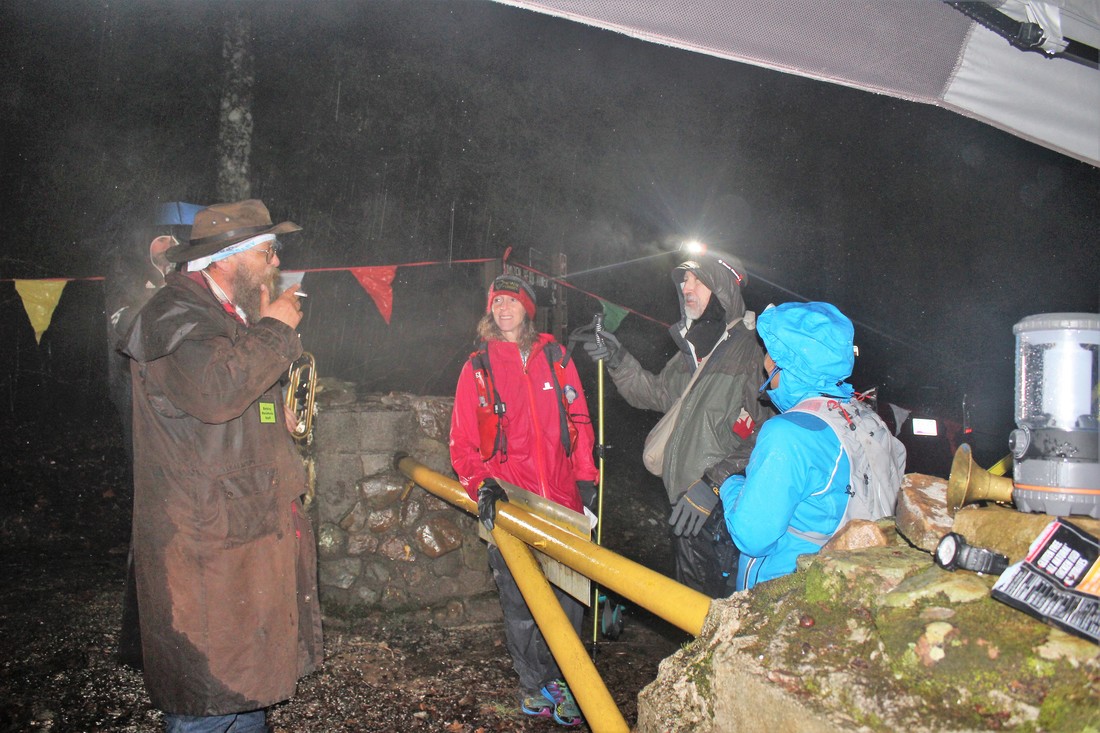


































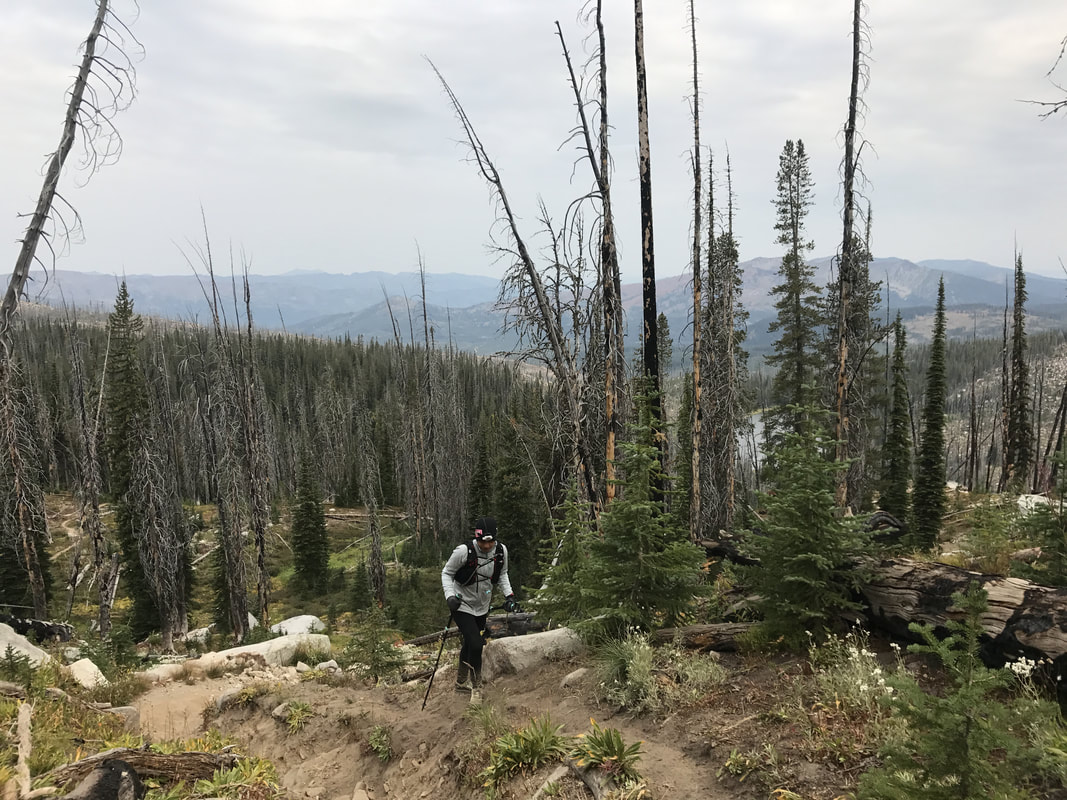



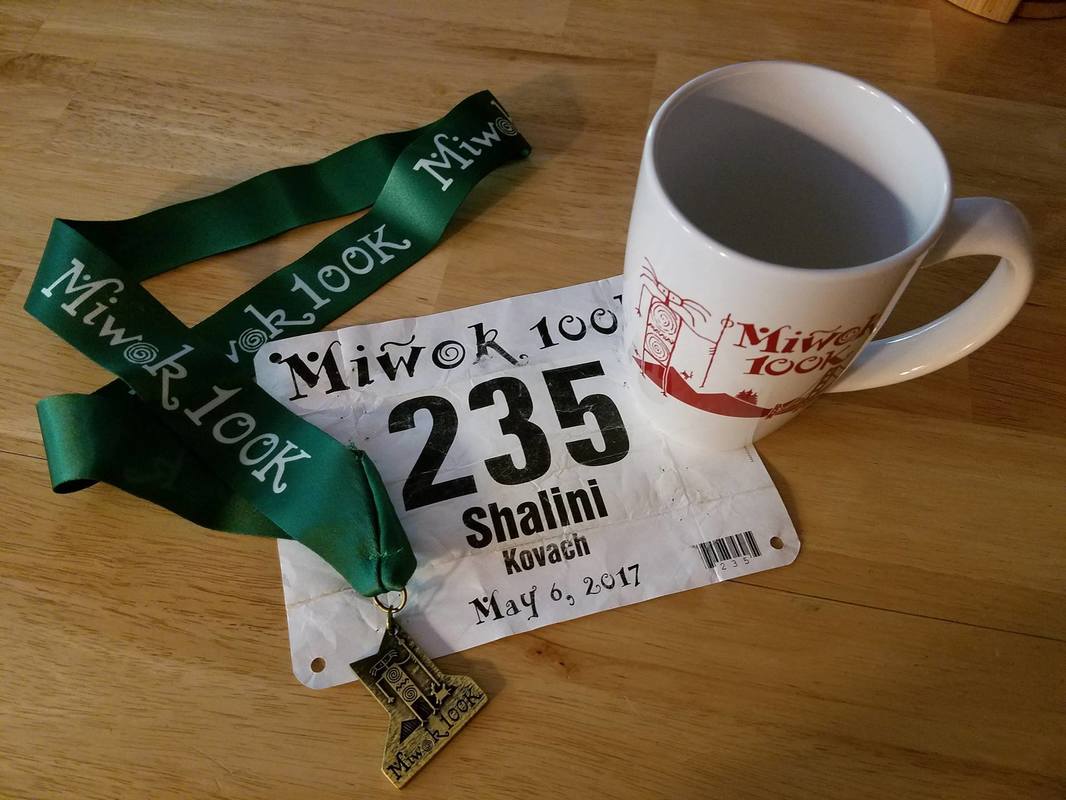
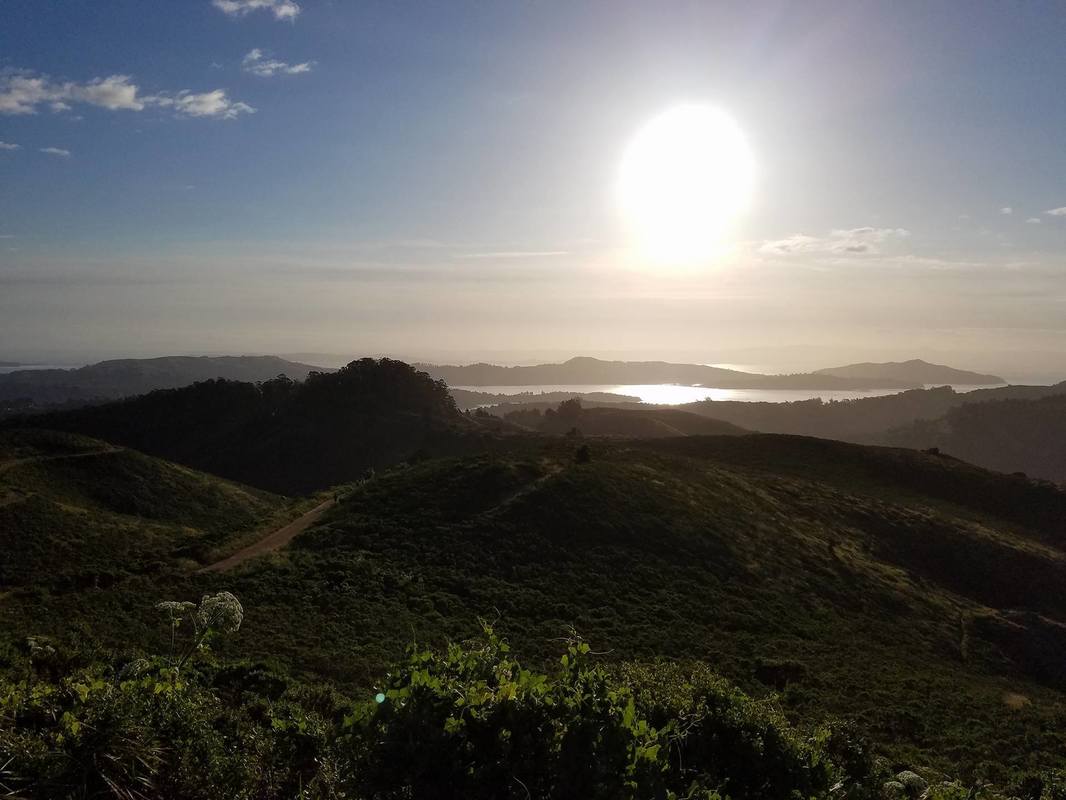
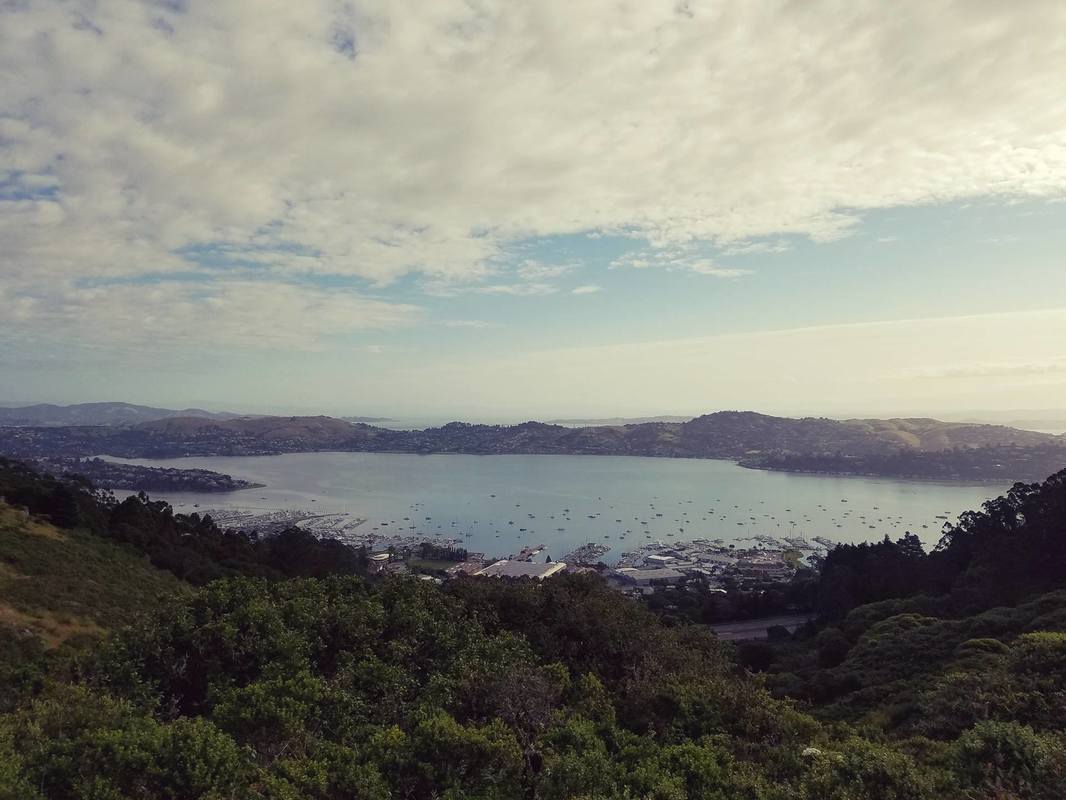

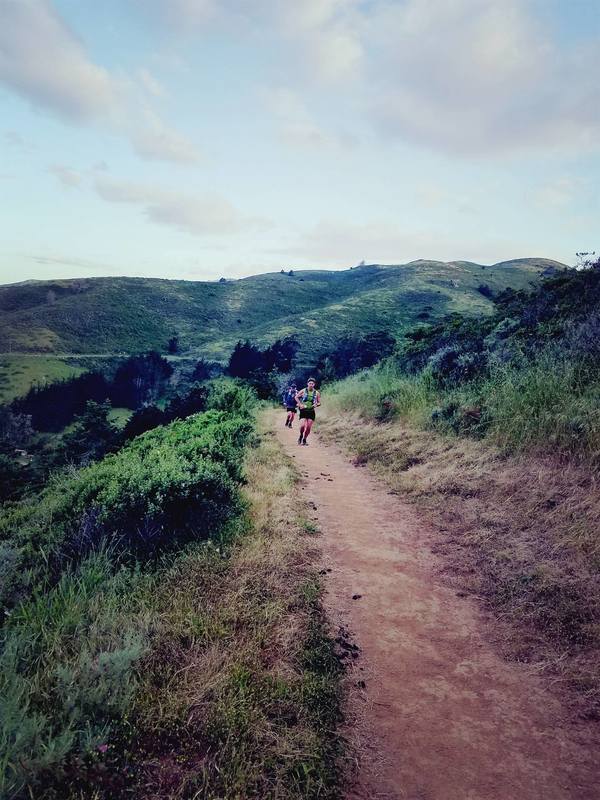
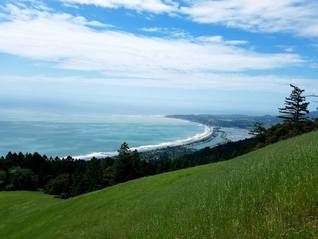





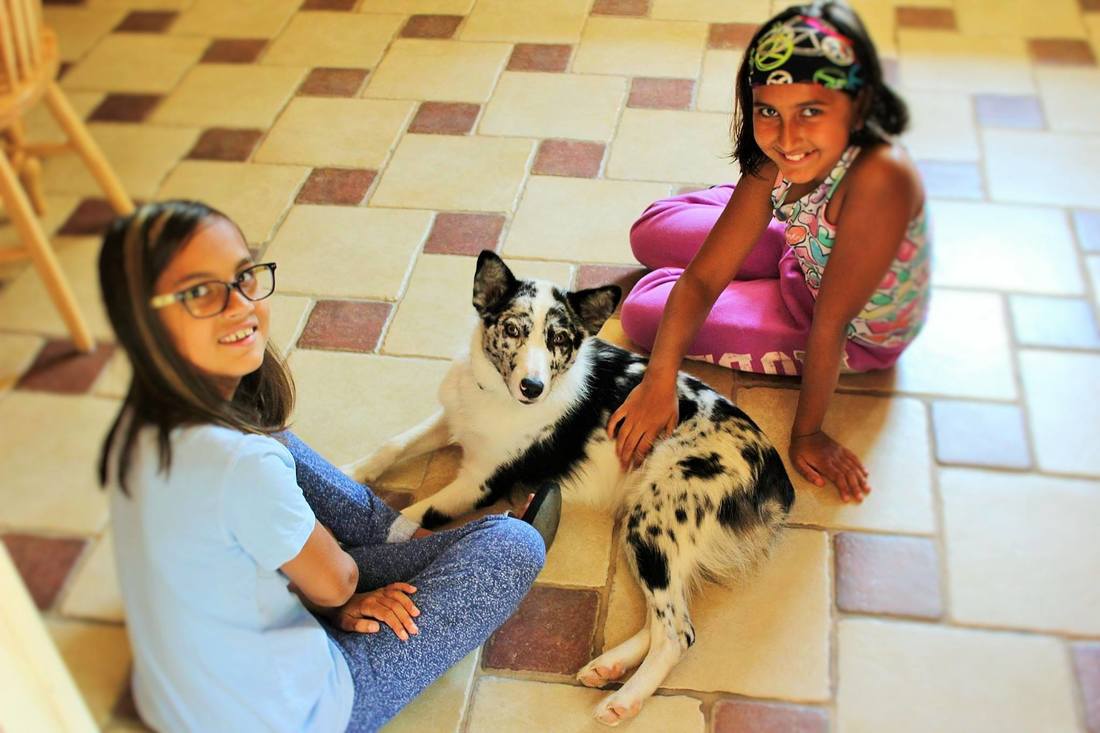
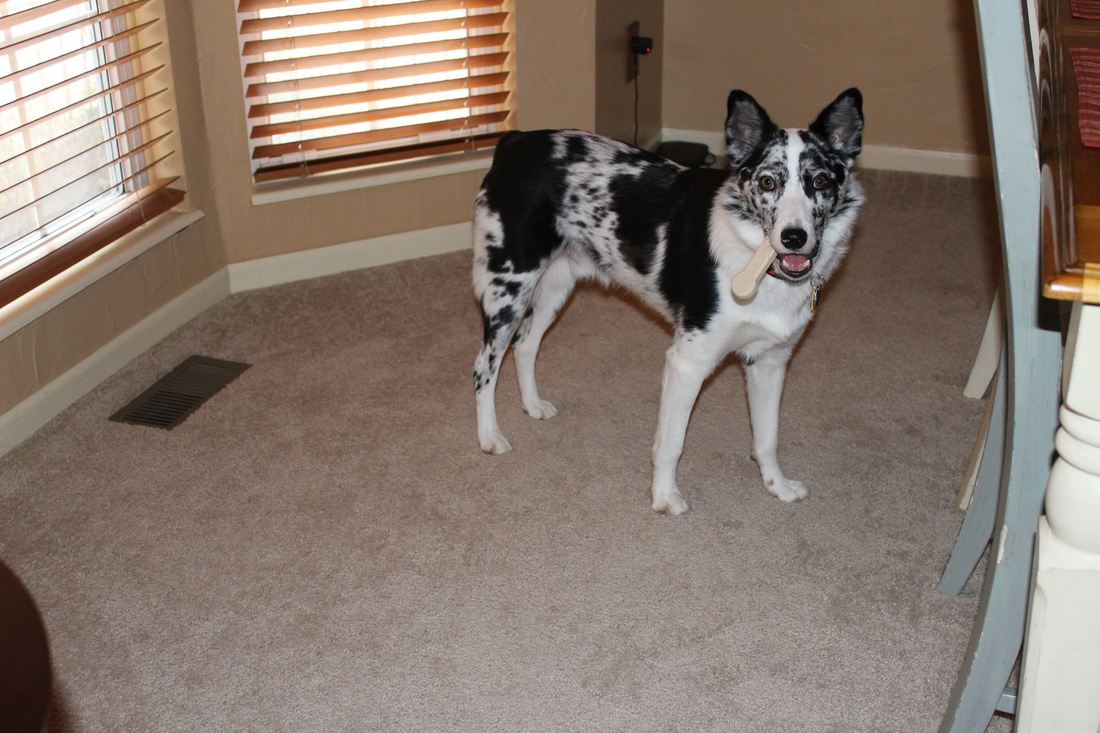
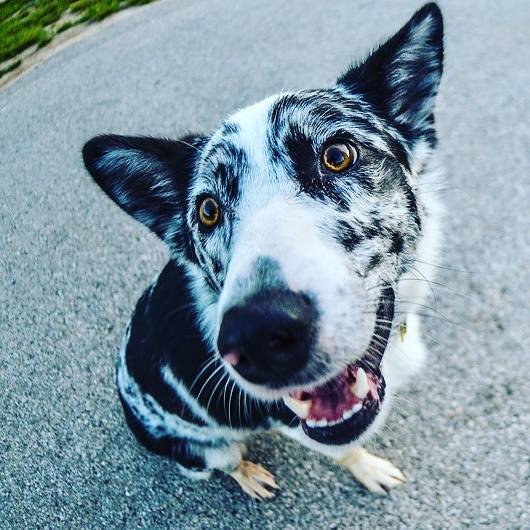



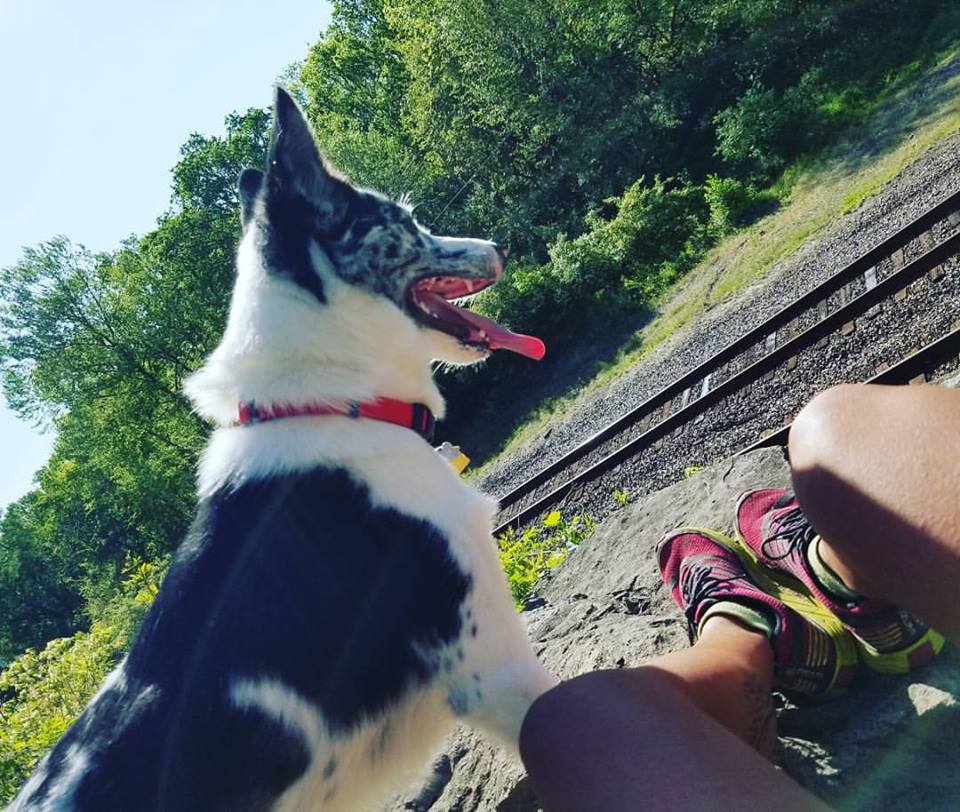
 RSS Feed
RSS Feed